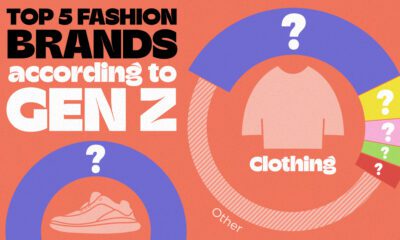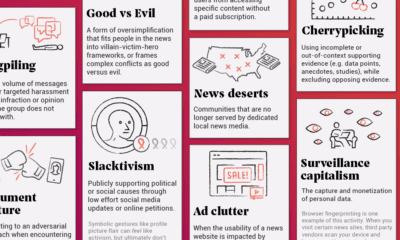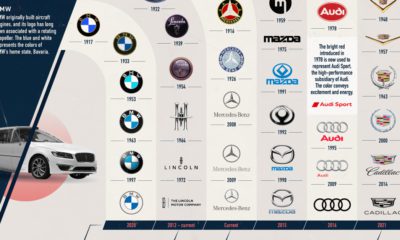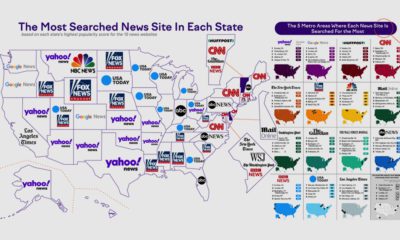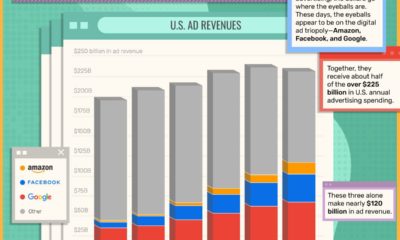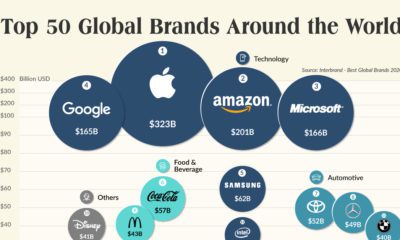Misc
The Psychology Behind Logo and Color Choice
Some professionals scoff at the importance of branding in business.
For many investors and analysts, this area of marketing seems fluffy and intangible, which makes it very hard to measure any potential benefits. While it’s true that quantifying intangibles is not always easy or accurate, it doesn’t mean that branding has no value to begin with.
In this way, branding may be comparable to the concept of “leadership” in sports. Athletes like Mark Messier, Michael Jordan, Ray Lewis, Mia Hamm, and Steve Yzerman weren’t just good players from a technical perspective, but they also had intangible qualities that elevated the performances of their respective teams. While it is hard to measure work ethic, passion, leadership, drive, and loyalty, or how these qualities rub off on teammates, it’s still clear to many coaches and managers that intangibles help win championships.
Like leadership, we know good branding when we see it, even though it can be tough to quantify. Coca-Cola is recognizable and nostalgic, while the Starbucks name may be the difference in choosing their cafe over an average-looking coffee shop in an unfamiliar neighborhood.
The Psychology Behind Logo and Color Choice
Logo and color choice are two of the most important parts of creating a quality brand. Today we have two infographics from The Logo Company. One shows the five major forms of logos, while the other dives into the meaning behind color choices.
We’ll add some commentary on the implications of logo and color choice in of the areas below.

Companies cannot control the actual emotional responses to their brand on a personal level, but they can do their best to control shape, style, and color to at least guide these interpretations.
In fact, our brains are hardwired to learn and memorize new shapes, so the way a logo is presented can have a big impact on its effectiveness. The five major types of logo forms – brand marks, word marks, letter marks, combo marks, or emblems – are a way to control shape and identity.
Word marks, for example, have the name of the company in the logo itself without any imagery. This helps achieve brand recognition, while the lack of accompanying graphics may convey a sense of sophistication to consumers.
Using just initials in a letter mark can show even more sophistication. Leading luxury consumer brands such as Louis Vuitton or Chanel have used this with much success.
On the opposite end of the spectrum, some companies use just a brand mark to convey a sense of universality. Even though “Shell”, “Apple”, and “Nike” are not spelled out in name, their famous icons are known throughout the world. The Nike swoosh conveys movement, while the World Wildlife Fund can tell a powerful story just by using the famous panda in its brand mark.
Target is another instantly recognizable brand mark. The simplicity and circular shape are key elements to the design, but the bright red color also plays a role. Here’s a guide to how color can evoke different emotions in consumers:
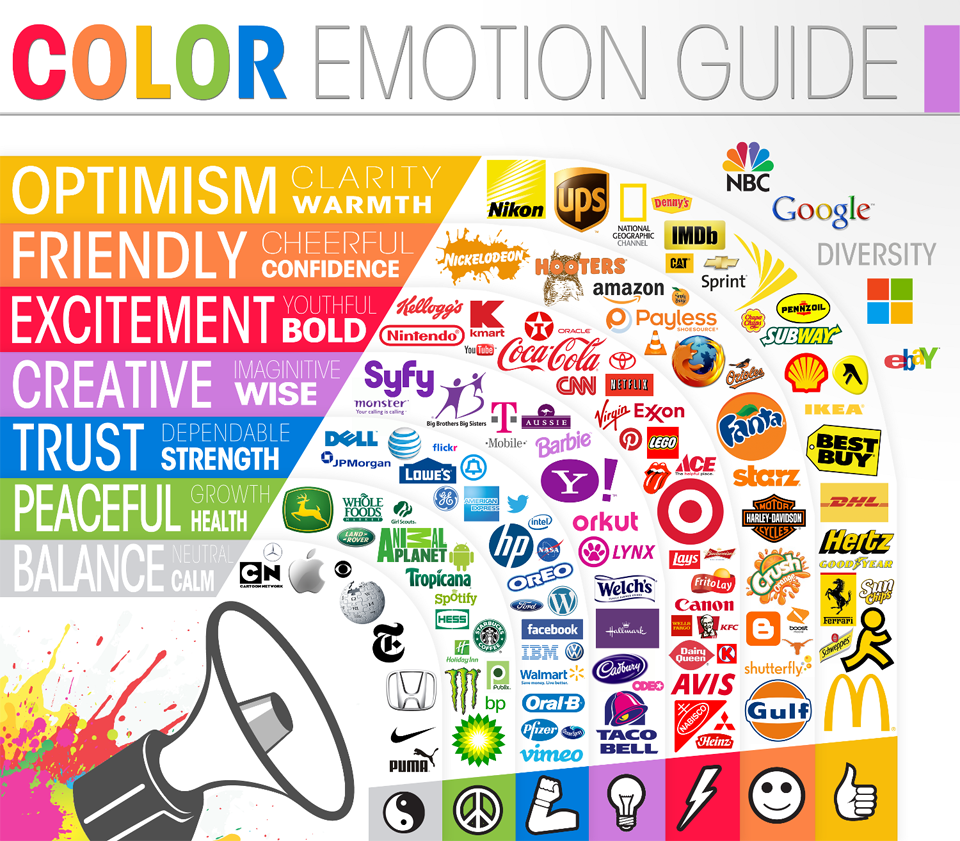
One step further, here is another version with a little more nuance, from Web Designer Depot.
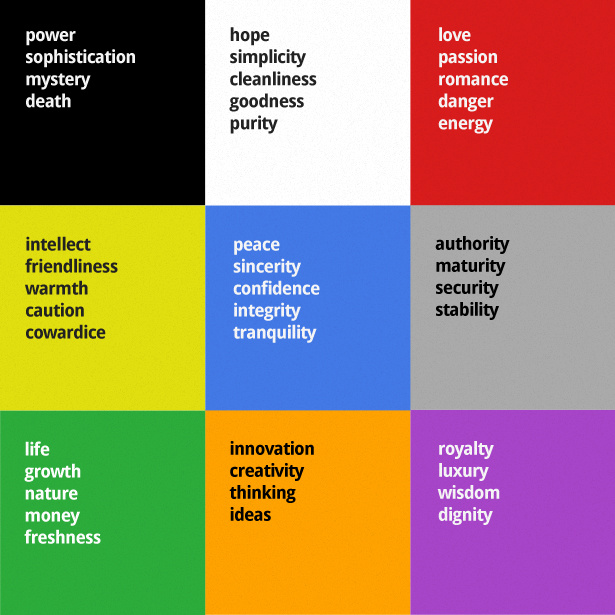
Of course, colors can and do get interpreted in different ways. However, they can also have the power to represent broad ideas for cultural or evolutionary reasons.
In a previous post on the psychology of color, we dive into this in more depth. For example, it explains why the color red stimulates appetite, or why blue brings a sense of productivity and efficiency.
Misc
How Hard Is It to Get Into an Ivy League School?
We detail the admission rates and average annual cost for Ivy League schools, as well as the median SAT scores required to be accepted.

How Hard Is It to Get Into an Ivy League School?
This was originally posted on our Voronoi app. Download the app for free on iOS or Android and discover incredible data-driven charts from a variety of trusted sources.
Ivy League institutions are renowned worldwide for their academic excellence and long-standing traditions. But how hard is it to get into one of the top universities in the U.S.?
In this graphic, we detail the admission rates and average annual cost for Ivy League schools, as well as the median SAT scores required to be accepted. The data comes from the National Center for Education Statistics and was compiled by 24/7 Wall St.
Note that “average annual cost” represents the net price a student pays after subtracting the average value of grants and/or scholarships received.
Harvard is the Most Selective
The SAT is a standardized test commonly used for college admissions in the United States. It’s taken by high school juniors and seniors to assess their readiness for college-level academic work.
When comparing SAT scores, Harvard and Dartmouth are among the most challenging universities to gain admission to. The median SAT scores for their students are 760 for reading and writing and 790 for math. Still, Harvard has half the admission rate (3.2%) compared to Dartmouth (6.4%).
| School | Admission rate (%) | SAT Score: Reading & Writing | SAT Score: Math | Avg Annual Cost* |
|---|---|---|---|---|
| Harvard University | 3.2 | 760 | 790 | $13,259 |
| Columbia University | 3.9 | 750 | 780 | $12,836 |
| Yale University | 4.6 | 760 | 780 | $16,341 |
| Brown University | 5.1 | 760 | 780 | $26,308 |
| Princeton University | 5.7 | 760 | 780 | $11,080 |
| Dartmouth College | 6.4 | 760 | 790 | $33,023 |
| University of Pennsylvania | 6.5 | 750 | 790 | $14,851 |
| Cornell University | 7.5 | 750 | 780 | $29,011 |
*Costs after receiving federal financial aid.
Additionally, Dartmouth has the highest average annual cost at $33,000. Princeton has the lowest at $11,100.
While student debt has surged in the United States in recent years, hitting $1.73 trillion in 2023, the worth of obtaining a degree from any of the schools listed surpasses mere academics. This is evidenced by the substantial incomes earned by former students.
Harvard grads, for example, have the highest average starting salary in the country, at $91,700.
-

 Real Estate2 weeks ago
Real Estate2 weeks agoVisualizing America’s Shortage of Affordable Homes
-

 Technology1 week ago
Technology1 week agoRanked: Semiconductor Companies by Industry Revenue Share
-

 Money1 week ago
Money1 week agoWhich States Have the Highest Minimum Wage in America?
-

 Real Estate1 week ago
Real Estate1 week agoRanked: The Most Valuable Housing Markets in America
-

 Business2 weeks ago
Business2 weeks agoCharted: Big Four Market Share by S&P 500 Audits
-

 AI2 weeks ago
AI2 weeks agoThe Stock Performance of U.S. Chipmakers So Far in 2024
-

 Misc2 weeks ago
Misc2 weeks agoAlmost Every EV Stock is Down After Q1 2024
-

 Money2 weeks ago
Money2 weeks agoWhere Does One U.S. Tax Dollar Go?


